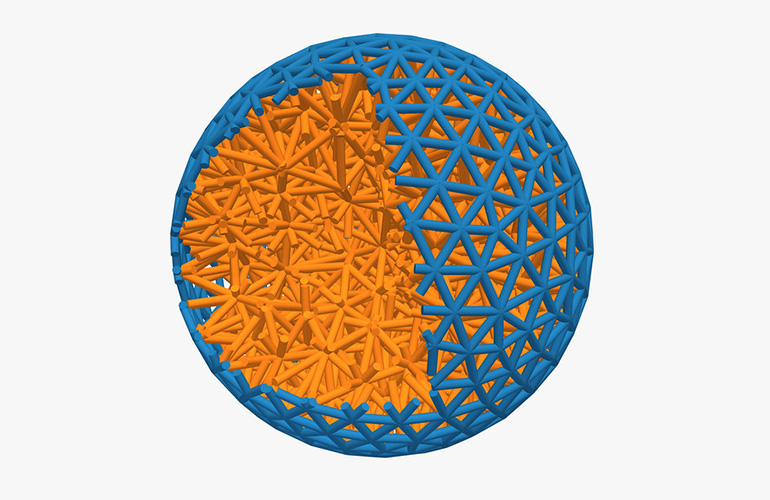|
Listen to this article
|

A simulated ball covered in tiny robots that can distort its shape. | Source: University of Bath
A research team from the Universities of Bath and Birmingham are hoping to reinvent the way we design robots.
Typically, robots, like robotic arms, are controlled by a single central controller. The research team, however, is hoping to create robots that are made from many individual units that act individually but cooperatively to determine the machine’s movement.
The researchers are doing this using active matter, collections of a large number of active agents that resist the way that ordinary soft materials move. Typical soft materials will shrink into a sphere, like water beading into droplets, to create the smallest surface area possible.
Active matter could be used in many ways. For example, a layer of nanorobots wrapped around a rubber ball could distort the shape of the ball by working in unison.
“Active matter makes us look at the familiar rules of nature – rules like the fact that surface tension has to be positive – in a new light,” Dr. Jack Binysh, the first author on the study, said. “Seeing what happens if we break these rules, and how we can harness the results, is an exciting place to be doing research.”
During the study, the researchers simulated a 3D soft solid with a surface that experiences active stresses. The stresses expand the surface of the material, pulling the solid underneath with it. This can cause the entire shape to change. This change could even be tailored by altering the elastic properties of the material.
“This study is an important proof of concept and has many useful implications,” Dr. Anton Souslov, another author on the paper, said. “For instance, future technology could produce soft robots that are far squishier and better at picking up and manipulating delicate materials.”
Eventually, the scientists hope to develop machines with arms made of flexible material with tiny robots embedded in the surface. The technology could also be used to coat the surface of nanoparticles in a responsive, active material. This would allow them to customize the size and shape of drug delivery capsules.
For now, the researchers have already started their next phase of work: applying the general principles they’ve learned to designing specific robots. The results of their study were published in Science Advances.






Tell Us What You Think!